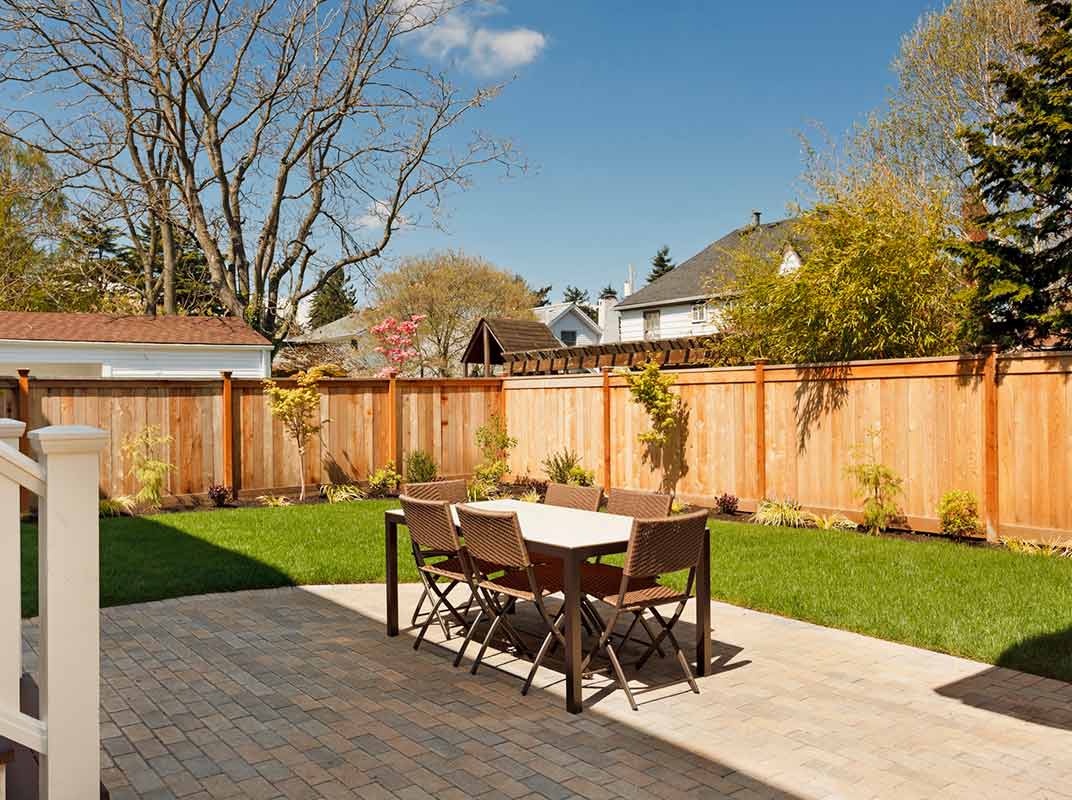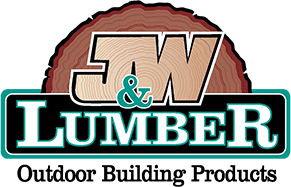
If you’re thinking of installing a new fence, you’ll need a general idea of how much lumber to order. The difference in quantity – and species – will have a major impact on your budget. Here’s a quick and handy guide to determine how much board fencing you’ll need, so you don’t come up short.
Step 1: Measure length
Break out the tape measure and get a sense of just how many lineal (or “linear”) feet comprise the perimeter of your fence. Another option is to take advantage of tech to measure distance. Instead of walking the perimeter of your fence line with a measuring tape, use the Google Maps Distance Tool to view your property in satellite mode and trace the part of the fence you want to replace or install. The map will provide a rough estimate of your lineal footage. This option is especially useful for large properties.
Step 2: Measure height
Determine if you want a short fence — which has a height of approximately 3 feet —or a tall fence, which can range from 3 to approximately 8 feet. Short fences require less material while tall fences create more privacy.
Step 3: Count the gates and corners
Determine the number of gate openings your fence will need. The number of gates will have an impact on the number of posts in your materials order. Also, decide if you’re going to build your gates yourself or install a pre-fab gate kit. Pre-fabricated gates are a fantastic way to include a professionally-crafted focal point without having to hire a contractor. Either way, don’t forget to measure the width of the gate opening(s) itself.
Step 4: Draw it out
Make a rough sketch on a piece of paper of the shape of your yard. Don’t worry if it’s to scale or not. The main thing is to include the number of corners or any unusual angles and write down lengths of each fence section. This will help you determine the final number of posts you’ll need.
Step 5: Take note of slopes and hills
Are any areas of your yard higher or lower than the rest? Make a note of this on your drawing, since it may have an impact on the final amount of lumber your project will require.
Step 6: Determine if your fence will be free-standing or attached
Consider whether your fence will be attached to your house or will stand on its own supports. This information will affect how many posts you will need as well as if you’ll need specialized hardware to bolt the fence to the exterior of your home.
Step 7: Pick a style
You may have a general idea of the fencing style you’re looking for – from short picket fences to tall dog-ear board fencing, or even an attractive horizontal fence. Keep in mind that each of these will require a different amount of materials, depending on your desired length and height. As you drive around town, start paying attention to various fence styles that you like. Bring some reference pictures down to the lumber yard. The team will be able to provide suggestions on the sturdiest and most attractive wood options for your budget. If you’re not sure where to start thinking about design, stop by your local lumber yard to see displays and get inspiration.
Step 8: Know your widths
Once you have decided on the final look of your fence, you’ll have a better idea of the individual widths of your board fencing planks. Also keep in mind the size of the gap (if any) between boards. This will play an important role in the final amount of lumber you’ll need.
Step 9: Do the math
Now that you’re equipped with all the important information (lineal feet, height, fencing style, board width, gap between boards), all you need to do is multiply. For example, if your vertical short fence will be 100 lineal feet long and your boards are 6 inches wide with no gaps, this means that you’ll need two boards per foot = 200 boards. Examine the length of each plank in relation to the height of your fence. If the planks are 12 feet long and your fence will be 3 feet tall, you’ll get 4 usable fencing boards out of each plank. Remember to add an additional 10% onto your final quantity in order to cover the downfall (the occasional plank that is warped, weak, too knotty, or otherwise unusable). This extra wood also comes in handy if you need to repair your fence down the line.
Step 10: Add up the posts
Determine the amount of space you’ll need between your posts. Six foot spacing is typical for most state codes but be sure to check city requirements or architectural guidelines if you live in an HOA. We never recommend trying to space out posts wider than 6 feet. Doing so can not only compromise the integrity of the fence, but – especially in the case of horizontal fencing – a too-long span will lead to your fence planks bowing outward over time. To calculate the final number of posts you’ll need, divide your lineal feet by 6 (due to a 6-foot distance between posts). Add in any additional posts to outline irregular corners (this is where your drawing comes in handy!) and one final post for the end.
Step 11: Calculate the rails
The final piece in determining the amount of board fencing you’ll need is to factor in lumber for rails. Horizonal fences don’t require rails since the planks themselves act as structural support. For tall vertical fences, we recommend three rails, although for short (approximately 3 feet) fences, two rails will suffice. To determine the amount of number you’ll need for your fence rails, compare the length of your rail board to the amount of posts. If your rails are 12 feet long and your posts are the recommended 6 feet apart, you’ll cover two posts with each rail.
Step 12: Share all your calculations with the lumber yard team
Remember that you don’t have to figure everything out on your own. Even if you’re installing your fence yourself, the specialists at the lumber yard can help you with every step of the process. Talk to them about your ideas. Don’t hesitate to ask questions or solicit suggestions. They’re experts in calculating materials and can double-check your work or point out things that you may have missed.
Estimating the amount of board fencing you’ll need for your project sounds more complicated than it is. It doesn’t take geometric wizardry or a detailed CAD drawing for you to get started. With accurate measurements, a rough drawing and a solid idea of your desired fence style, you’ll quickly be able to determine the amount and cost of the materials you’ll need.

hi, I am calculating how much wood is needed for a horizontal wooden fence in my garden that will be secured to a pre existing boundary wall. The length of wall to be covered is 84.5 feet and the fence will be 6ft high. We will be securing wooden batons to the wall first for the fencing.
The width of the wood is 4 -4.5 inch
Hi Sinead
Thank you for reaching out! Will the wall have any slope? I would suggest taking the length of the fence divided by the width of the fence and that should give you a good approximation for a starting point. If you have more questions please feel free to give us a call at (760) 727-1510 or shoot us an email at prefcust@jwlumber.com
I am doing a DIY wood fence it will be 100 foot in length how many dog eared pickets do I need for a fence that length
Hi Vanessa-
Thats a great question! It will depend on your yard, slope and if you are doing any gates, entries or gaps. Please give our Escondido office a call at (760) 745-6800 and we will be happy to help you out!
How many rails do I need I have 20 post 6′ apart
If I have a 55×55 how many panels will I need on each side
The blog provides a step-by-step guide on how to estimate the amount of board fencing required for your project. It covers everything from measuring the fence perimeter and height to determining the number of gates, posts, and rails you’ll need. Factors like terrain, fence style, and board width are also considered, along with helpful tips for calculating materials.